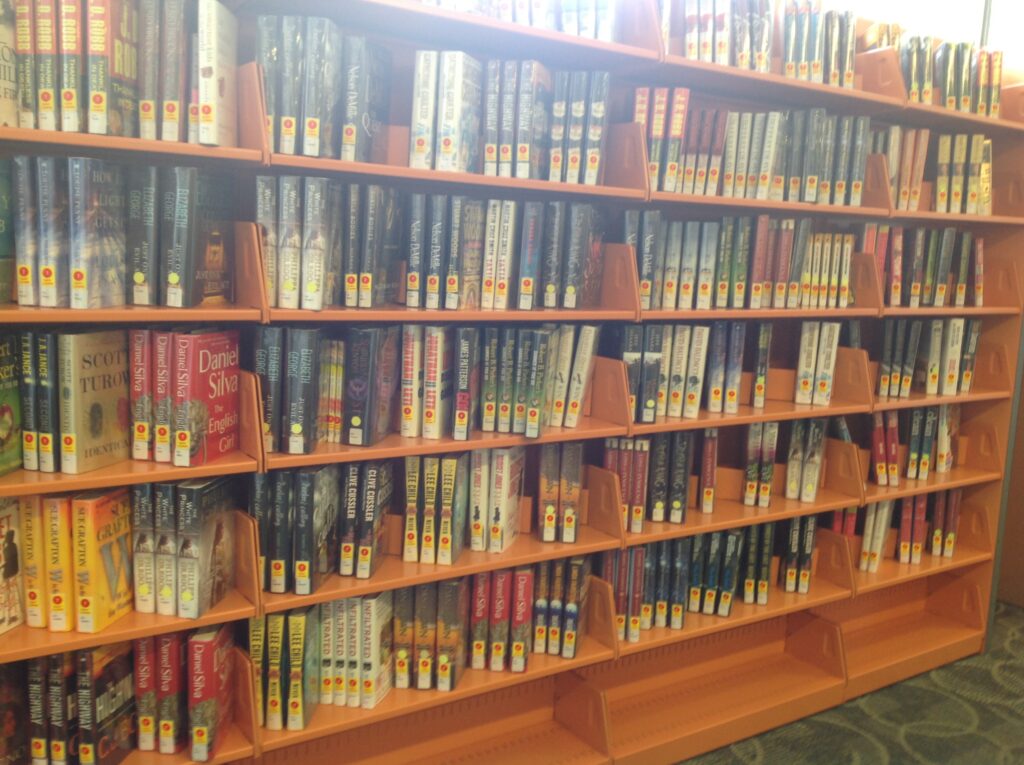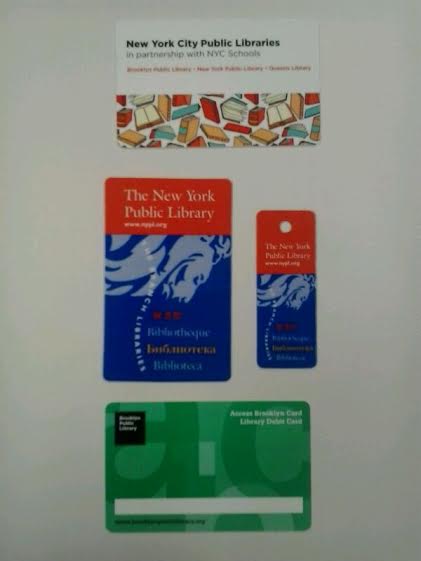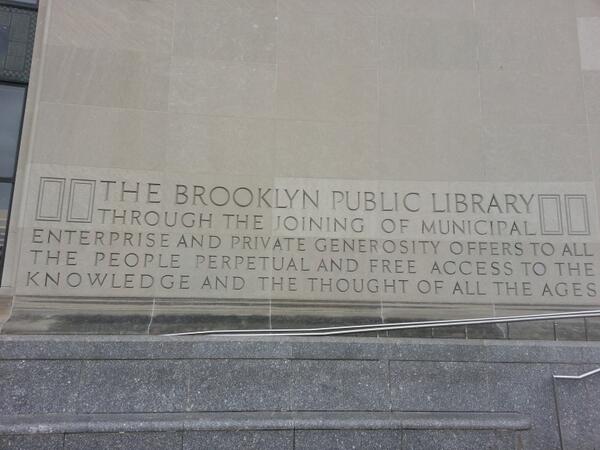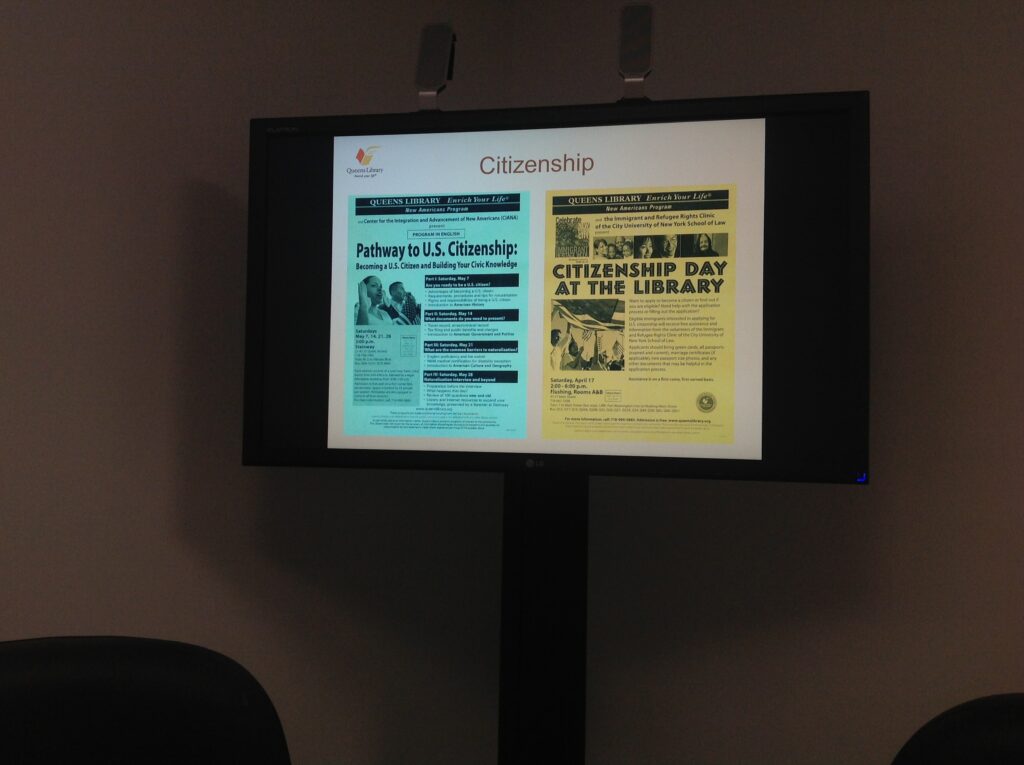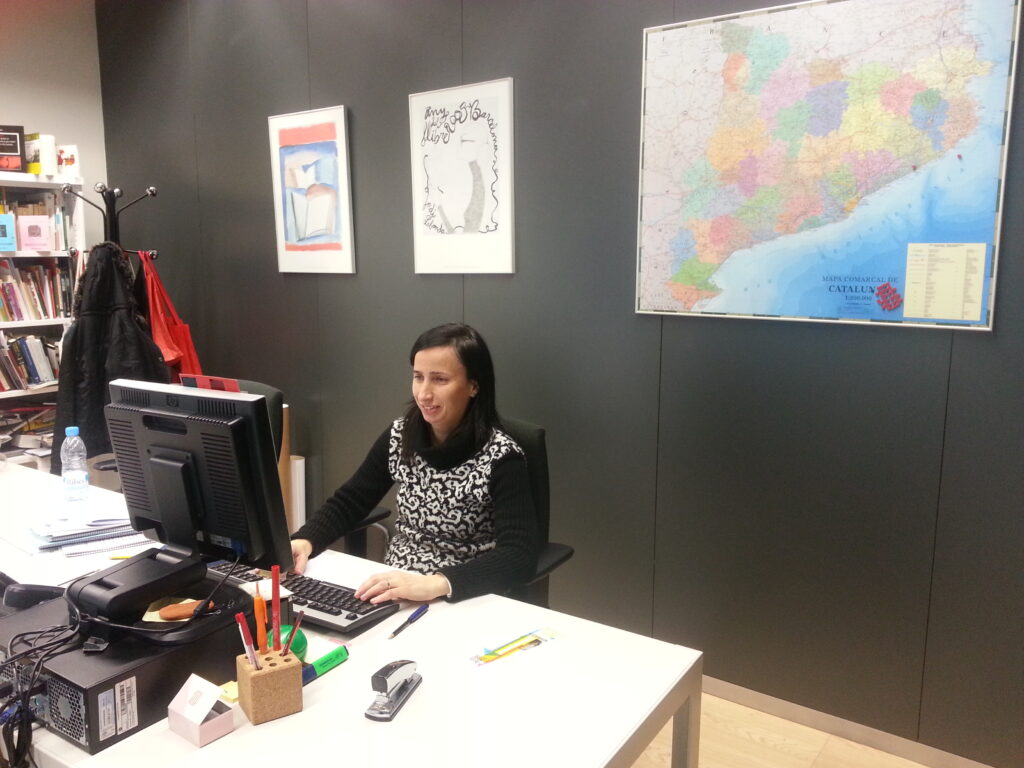25.01.2014 - 13:20
(Carme Fenoll, Catalonia’s Head of Library Services will be interviewed on #CatalanTalk on January 28, at 17h CET (11am EST, 8am PST). You can read previous interviews at CatalanTalk.com. The interviews are simultaneously translated into Catalan, Spanish, French, German, Dutch, and Italian. Follow each language edition by appending the two-letter language code—CA, ES, FR, DE, NL, IT, respectively—to #CatalanTalk: e.g., #CatalanTalkCA, #CatalanTalkES, etc.)
I said farewell to 2013 in New York City where, during my Christmas holidays, I had the opportunity to talk with officials of the three library systems existing in the city of New York: NYPL (Manhattan, Staten Island and the Bronx), Brooklyn and Queens. Each of these networks serves a population of 2.5 million inhabitants, with one central library and 60 branches. In the following paragraphs is a Decalogue incorporating ten ideas that stand out from all that I saw. They are accompanied by some comments about our own public library system and about new ideas we want to incorporate this year in the Library Service of the Department of Culture.
1. Very Friendly Staff
Surely this is nothing new to those who have already visited the city of NY, but I am still impressed by having seen and shared time with employees who are notable for their friendliness and willingness to help.
Each person I met in the three networks, even though they knew that my visit wasn’t strictly official, spent a whole morning of work with me and fully answered all my questions. This same warm welcome also greets all foreign newcomers to the public library. My “homework” for 2014 is a detailed study of the “New Americans” program. I am still impressed by the librarians’ treatment of newcomers and their perceived concept of opportunity, which is such that libraries end up being widely used by these new arrivals. If we think about the role of the librarian as a prescriber and cultural and literary adviser, taking special care of customer service is a basic sine qua non. Librarians working in music and children’s sections have specialized backgrounds, a question that we will have to work on here too.
The libraries also serve as job centers, which is a primary, basic and useful service. In Catalonia, many libraries also offer job information, but we lack transversal and cooperative connections with other services aimed at alleviating what is a major problem for many families.
2. Libraries and Bookstores, Hand-in-Hand
It is undeniable that there is still a way to go for defining the place of the digital book in libraries. Meanwhile, we see good proposals addressed to defining it: in addition to e-book circulation, which in the NYPL involved the loan of one million copies vs. 28 million loans of hardcopy books in 2013, the possibilities for supporting desktop publishing, for example, are making their way into the libraries of Brooklyn. Likewise, 2014 will see training offered to Catalan librarians by the expert Javier Celaya regarding opportunities in this area.
Similarly, we will follow the path of libraries in NY and work to implement a system for patrons to order books through their library, using a platform linked to the Booksellers Guild. Thus, library users will have a new channel for purchasing books and, at the same time, the commission or profit margin will go towards the purchase of books for their own libraries.
3. Carnegie Libraries: Past and Future.
When creating the network of public libraries a century ago, Catalan leaders were inspired by the US model, specifically the one established by Andrew Carnegie. Today, in the city of NY alone we can still find 20 Carnegie libraries (of the more than 2,500 built between 1883 and 1929) representing quintessential philanthropy in the country.
This year marks the centenary of the opening to the public of our National Library, the Biblioteca de Catalunya. In 2015 the centenary of the establishment of the public library network is scheduled to be celebrated, as well as celebrating the success of a library model that extends throughout our territory, providing a proximate basic cultural service. In all, 92.6 % of the Catalan population has a library in the same town or neighborhood. Further growth will continue to be considered essential.
4. In Residence
The Central libraries of Brooklyn and Manhattan (NYPL) offer space for writers and artists in residence. A range of possibilities is offered: from the international program of scholarships provided by the Dorothy and Lewis B. Cullman Center for Scholars and Writers, to the recent proposal for an Artist in Residence at the Brooklyn Central Library. It is a good way to exchange knowledge and to link literature and art to an even greater extent to libraries.
Also recommended is the program, “Brooklyn by the Book”, which works collaboratively with the publishing industry and unveils literary talent in Brooklyn. Similarly, in collaboration with the Institute of Catalan Letters and the Catalan Institute for Women, we will soon present the program “De Capçalera” [Headline], which will pair writers with collaborating libraries.
Another new program along the same lines is “Destapats” [Uncovered] that aims to discover young talent and have them presented by established authors.
One outstanding issue in both NY and here is attracting more Wikipedian residents. Our project, Wiki Loves @ bibliotequescat has generated interest among those responsible for the library networks in New York and we have already started to share strategies that have worked in both places.
5. ‘Fees? Absolutely not!’
In various conversations with the library directors, there arose the question of the crisis and of measures to deal with budget cuts. One response stays etched in my memory: Mr. Kerwin Pilgrim, Program Director of Adult Education Projects in Brooklyn Libraries, answered my question about applying charges for basic services (issuing cards, loans, etc.) and his forceful response allowed me to understand many things about the American society: No, they did not consider applying fees to basic services because of their understanding of libraries as links to the concept of democracy and as its guarantors.
However, as happens almost everywhere, heavy fines are applied to overdue material. This is a question that we at the Department of Culture are currently working on.
6. Broad Lending Policies
The lending policies NY libraries are expansive: NYPL and Queens allow 50 documents to be checked out for three weeks and Brooklyn allows up to 99 documents for the same period. (In Catalonia we have been able to implement 30 × 30: 30 documents for 30 days.)
Their library card is free and easy to do (just as it is here) and they are working on having a single card. Currently there are three different cards, each of which in theory could be used in the three networks but, due to the interest in statistics of the various institutions, in practice this policy is not applied. In this sense, in Catalonia we are working to soon be able to provide a link connecting the two current public library catalogs and to raise awareness that the library cards are valid in any of the existing 370 public libraries.
What might surprise you most in NY libraries? Seeing that the Queens Central Library has purchased 150 copies of Fifty Shades of Grey and that they have an equal number of copies of new titles that you could easily find in good bookstores here. The new title display of the Queens Central Library is well worth seeing, as is its impressive section of books in other languages (47.7 % of the population of Queens is foreign born).
Also very interesting is the implementation of a pilot program of a ‘Library-School’ card that offers advantages for borrowing and for information services to schools that follow a reading program.
7. Rethinking Spaces for Children and Youth
In architectural terms, the existing libraries in Catalonia have nothing to envy in regards to those of New York; however, we can learn from their trends in programming and distribution of space.
In brief: do not miss looking at the Children’s Library Discovery Center, a combination of what could be a children’s science museum and a library: an essential concept. I recommend that you take four minutes to watch this video.
And in terms of trends with youth: there are isolated areas separated from children that incorporate all kinds of video games. Make sure to look at the brands and models available at the Queens Central Library, with numerous booths and a continuing education plan that is truly enviable.
8. Philanthropy
Yes, we all know that the legal and cultural habits in the US that encourage this practice are very different from ours, but it still never ceases to amaze. The new and spectacular room, Shelby White / Leon Levy Information Commons in Brooklyn, which includes areas for recording or radio, was brought into being thanks to a donation from a businessman. It is impressive to learn that library staffs generally include 2 or 3 people dedicated solely to fundraising programs and private donations, and that donations are constantly being requested in order to improve library services. All of this leaves you with the feeling that we have a lot of ground to cover here.
9. Architecture vs. Programs
As I mentioned, the architecture and furnishings of many of the branch libraries are not exactly the most appealing aspect of these libraries. The spaces are functional areas very often in need of an investment in furniture. However, if you approach the information desk or notice boards, you get a pleasant surprise: language training, for example. Although a number of Catalan libraries offer conversation in English or French, in NY many have already gone a step further and offer “Business English” or “Excel in French”, for example. This is an idea that we would like to pursue here in collaboration with university libraries such as Universitat Oberta de Catalunya and Universitat Politècnica de Catalunya, with whom we have already launched different projects.
Here in Catalonia we are still deploying parts of the Library Map: in 2014 we plan to maintain last year’s figures of new libraries, with 13 new spaces.
10. Public Policy in Libraries
Also noteworthy is the dissemination by libraries of programs of national interest: Did you know that President Obama recruited 17,000 librarians to help deploy “Obamacare”, the new health care system, throughout the country? Did you know that New York citizens can ask the library to assist them in getting a passport or other official papers?
With our regional structure, libraries offer a golden opportunity to start projects from the base: along these lines, a new project, “Acció paral·lela” [Parallel Action], will present a vision of the country as seen from its libraries. Another new project is “Públics BIB” [LIB Public], aimed at bringing the public from throughout Catalonia closer to cultural facilities scattered across the land and offering training programs and customized services in libraries.
Conclusion
My assessment is not alarmist. In Catalonia we have many programs and attitudes that need to improve and can emulate New York’s system, but nevertheless the Catalan library system has a good level of social support and its tendency is to be open to constant change. I would say that we need to continue working to strengthen our libraries as the link to democratic access to culture and to show that, in many cases, they are the main engine of culture in our land. I’m interested in the vision of immigration as a clear opportunity for growth and the efforts for providing a service that distinguishes itself by its quality. A thrust towards the creation of new programs and facilitating their being shared. We’ll have to return soon!

